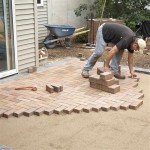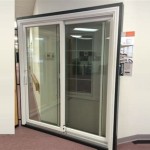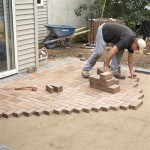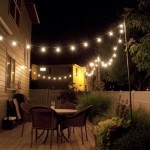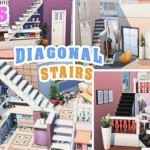Window Coverings for Patio Doors: Functionality and Style
Patio doors serve as a transition between indoor and outdoor living spaces, offering natural light, ventilation, and convenient access to patios, decks, and backyards. However, these expansive glass surfaces also present challenges in terms of light control, privacy, energy efficiency, and aesthetic integration with interior decor. Selecting appropriate window coverings for patio doors is crucial for optimizing these factors and enhancing the overall functionality and appeal of the space.
This article explores various window covering options for patio doors, detailing their features, benefits, and considerations for selection. It aims to provide a comprehensive overview to aid in choosing the most suitable solution based on specific needs and preferences.
Understanding the Challenges of Covering Patio Doors
Patio doors differ significantly from standard windows in several key aspects, influencing the selection of appropriate window coverings. Their larger size often necessitates specialized mechanisms for operation and support. The broader expanse of glass also increases the potential for heat transfer, both in terms of solar heat gain during warmer months and heat loss during colder periods. Furthermore, patio doors are typically high-traffic areas, requiring durable and easy-to-operate coverings that can withstand frequent use.
Privacy is another significant consideration. Depending on the location and proximity to neighbors, adequate privacy solutions are essential. Finally, the aesthetic impact of window coverings on both the interior and exterior should be carefully considered, ensuring they complement the architectural style and overall design scheme.
Vertical Blinds: A Classic Patio Door Solution
Vertical blinds are a long-standing and widely used option for patio doors, primarily due to their functionality and versatility in covering large expanses. They consist of vertically oriented slats that can be rotated to control the amount of light entering the room and can be drawn completely to the side for unobstructed access. The vertical orientation complements the vertical lines of the door itself, creating a cohesive aesthetic.
Materials: Vertical blinds are available in a variety of materials, including vinyl, fabric, and wood. Vinyl is a cost-effective and durable option, resistant to moisture and easy to clean. Fabric blinds offer a softer look and can be treated to provide varying degrees of light control, from sheer to blackout. Wood vertical blinds offer a more sophisticated and upscale aesthetic but require more maintenance and are less suitable for humid environments.
Operation: Vertical blinds are typically operated using a wand or cord. Wand operation is generally considered safer, as it eliminates the potential entanglement hazard associated with cords. The mechanism allows for smooth and easy rotation of the slats, as well as the ability to draw the blinds completely open or closed. Motorized options are also available, offering enhanced convenience and control, particularly for large or hard-to-reach patio doors.
Advantages: Vertical blinds offer excellent light control and privacy, are relatively easy to maintain, and are available in a wide range of colors and styles. Their cost-effectiveness makes them a popular choice for budget-conscious consumers.
Disadvantages: Vinyl vertical blinds can sometimes appear dated or institutional. Fabric blinds can be more susceptible to staining and may require professional cleaning. The stacking of the slats when the blinds are open can also partially obstruct the view.
Sliding Panels: A Modern and Stylish Choice
Sliding panels, also known as panel track blinds or gliding window panels, offer a contemporary and elegant alternative to traditional vertical blinds. They consist of wide, flat panels of fabric or other materials that slide horizontally along a track, similar to a Japanese shoji screen. This design creates a clean and streamlined appearance that complements modern interior design styles.
Materials: Sliding panels are available in a wide range of fabrics, including woven materials, solar shades, and even natural materials like bamboo. The choice of fabric determines the level of light control and privacy. Solar shades offer excellent UV protection while maintaining a view of the outside, while blackout fabrics provide complete light blockage for bedrooms or media rooms.
Operation: Sliding panels are typically operated manually by pulling them along the track. They can be configured to stack on one side, split in the middle, or overlap slightly for added privacy and light control. Motorized options are also available for enhanced convenience.
Advantages: Sliding panels offer a modern and sophisticated aesthetic, excellent light control and privacy options, and a wide range of fabric choices. They are also relatively easy to operate and maintain.
Disadvantages: Sliding panels can be more expensive than traditional vertical blinds. The stacking of the panels when open can partially obstruct the view, although this can be minimized by selecting a configuration that allows the panels to stack completely to the side. Installation can also be more complex than with vertical blinds.
Cellular Shades: Energy Efficiency and Versatility
Cellular shades, also known as honeycomb shades, are characterized by their unique cellular construction, which creates pockets of insulation that help to reduce heat transfer. This makes them an excellent choice for improving energy efficiency and reducing heating and cooling costs. They are also available in a wide range of colors, fabrics, and operating systems, making them a versatile option for various design styles.
Materials: Cellular shades are typically made from fabric, although the specific type of fabric can vary. They are available in single-cell, double-cell, and even triple-cell configurations, with each additional layer of cells providing increased insulation. Light filtering and blackout options are also available.
Operation: Cellular shades can be operated in a variety of ways, including cordless lift, continuous cord loop, top-down/bottom-up, and motorized. Cordless lift systems are a popular choice for safety, as they eliminate the risk of entanglement. Top-down/bottom-up operation allows for flexible light control and privacy, as the shades can be lowered from the top or raised from the bottom.
Advantages: Cellular shades offer excellent energy efficiency, a wide range of colors and styles, and various operating systems to suit different needs. They are also relatively lightweight and easy to install.
Disadvantages: Cellular shades can be more expensive than some other window covering options. The cellular construction can also attract dust and debris, requiring regular cleaning. They may not be as durable as some other options, particularly in high-traffic areas.
Roman Shades: A Touch of Elegance and Softness
Roman shades offer a classic and elegant look, adding a touch of softness and sophistication to any room. They are made from a continuous piece of fabric that folds into horizontal pleats when raised, creating a layered and textured appearance. Roman shades are available in a wide range of fabrics, patterns, and styles, making them a versatile choice for various decor schemes.
Materials: Roman shades can be made from virtually any type of fabric, including cotton, linen, silk, and synthetic blends. The choice of fabric determines the level of light control, privacy, and insulation. Heavier fabrics provide more light blockage and insulation, while lighter fabrics offer a more sheer and airy look.
Styles: There are several different styles of Roman shades, including flat Roman shades, hobbled Roman shades, and looped Roman shades. Flat Roman shades have a clean and minimalist look, while hobbled Roman shades feature cascading folds that add dimension and texture. Looped Roman shades create soft, rounded folds at the bottom.
Operation: Roman shades are typically operated using a cord or chain that raises and lowers the shade. Cordless lift systems are also available for enhanced safety and convenience. Motorized options are also available for larger or hard-to-reach patio doors.
Advantages: Roman shades offer a classic and elegant look, a wide range of fabric choices, and various styles to suit different tastes. They can also provide excellent light control and privacy, depending on the fabric selected.
Disadvantages: Roman shades can be more expensive than some other window covering options. They can also be more difficult to clean and may require professional cleaning. The pleats can also attract dust and debris, requiring regular maintenance.
Drapes and Curtains: Timeless Beauty and Versatility
Drapes and curtains are a timeless and versatile option for patio doors, offering a wide range of styles, fabrics, and colors to complement any decor. They can be used to create a variety of looks, from formal and elegant to casual and relaxed. Drapes and curtains also provide excellent light control, privacy, and insulation.
Materials: Drapes and curtains are available in a vast array of fabrics, including cotton, linen, silk, velvet, and synthetic blends. The choice of fabric determines the level of light control, privacy, insulation, and durability. Heavier fabrics provide more light blockage and insulation, while lighter fabrics offer a more sheer and airy look. Blackout linings can be added to drapes and curtains to provide complete light blockage.
Styles: There are several different styles of drapes and curtains, including pinch pleat, grommet, rod pocket, and tab top. Pinch pleat drapes have a more formal and tailored look, while grommet and rod pocket drapes have a more casual and relaxed look. Tab top drapes are hung from tabs sewn onto the top of the fabric.
Operation: Drapes and curtains are typically operated manually by drawing them open or closed along a rod. Motorized options are also available for enhanced convenience, particularly for large or heavy drapes.
Advantages: Drapes and curtains offer a timeless and versatile look, a vast range of fabric choices, and excellent light control, privacy, and insulation. They can also add a touch of softness and warmth to a room.
Disadvantages: Drapes and curtains can be more expensive than some other window covering options. They can also be more difficult to clean and may require professional cleaning. They may also take up more space than other options, particularly when drawn open.
Plantation Shutters: A Durable and Stylish Investment
Plantation shutters are a durable and stylish window covering option that adds value and sophistication to any home. They consist of horizontal louvers (slats) that can be tilted to control the amount of light and privacy. Plantation shutters are typically made from wood or vinyl and are available in a variety of colors and finishes.
Materials: Plantation shutters are typically made from wood or vinyl. Wood shutters offer a classic and elegant look, while vinyl shutters are more resistant to moisture and are easier to clean. Composite materials combining wood and plastic are also available, offering a balance of durability and aesthetics.
Louver Size: Plantation shutters are available with different louver sizes, typically ranging from 2.5 inches to 4.5 inches. Larger louvers allow for more light and a wider view, while smaller louvers offer more privacy.
Operation: Plantation shutters are operated manually by tilting the louvers. A tilt rod connects the louvers, allowing them to be adjusted simultaneously. Some plantation shutters also feature individual louver control, allowing for more precise light and privacy control.
Advantages: Plantation shutters are durable, stylish, and add value to a home. They offer excellent light control, privacy, and insulation. They are also relatively easy to clean and maintain.
Disadvantages: Plantation shutters can be one of the more expensive window covering options. Installation can also be more complex and may require professional installation. They may also block more of the view than other options when closed.
Key Considerations When Choosing Patio Door Window Coverings
Selecting the appropriate window covering for a patio door involves careful consideration of several factors. These include the level of light control required, the desired level of privacy, the importance of energy efficiency, the aesthetic style of the room, and the budget constraints.
Durability is also a crucial consideration, especially for high-traffic areas. The ease of operation and maintenance should also be taken into account. Finally, safety is paramount, particularly in households with children or pets, necessitating the selection of cordless or motorized options to eliminate cord hazards.
By carefully evaluating these factors, it is possible to choose patio door window coverings that enhance both the functionality and aesthetic appeal of the space, creating a comfortable and inviting living environment.

How To Find The Best Patio Door Window Treatments Pella

5 Window Treatment Options For Sliding Glass Doors Pella Windows

11 Window Treatments For Sliding Glass Doors

Window Treatments For Sliding Glass Doors Best Door Coverings

120 Best Sliding Glass Door Window Treatments Ideas

Window Treatments For Sliding Glass Doors Patio French

Odl Add On Blinds Door Window Treatments Between The Glass Patio Coverings French For Doors

Cover Glass Doors Plantation Shutters For Sliding

Cover Glass Doors Plantation Shutters For Sliding

120 Best Sliding Glass Door Window Treatments Ideas


